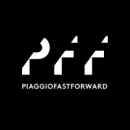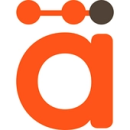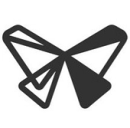This month marks the culmination of a decade-long effort on the part of a venerable Bostonian institution — the Celtics are back in the NBA Finals for the first time since 2010. How did the storied franchise manage to reach this pinnacle of pro-basketball achievement? One answer is iteration.
The Celtics have swapped head coach Brad Stevens for Ime Udoka. They’ve developed promising young stars in Jaylen Brown and Jayson Tatum. They acquired cagey veterans. They have done the research, iterated various lineups, integrated piece after piece of a complicated machine and now have a prototype to be tested one last time against the Golden State Warriors.
But Boston’s problem-solving acumen isn’t confined to the Celtics’ front office. Whether developing a winning recipe for basketball excellence or digital improvements to the healthcare industry, New England’s best teams are offering their members the chance to test solutions, learn from failures and refine results. After all, the final product could be the software that powers an autonomous vehicle, a piece of manufacturing technology or an NBA championship.
As a mechanical engineer for 3D printing developer and manufacturer Formlabs, Rosa Ruiz researches and creates prototypes to realize her team’s goals. That process is painstaking, but it hasn’t dampened Ruiz’s enthusiasm, and she is excited to talk about Formlabs’ recent successes in the development of manufacturing technology.
“I really enjoyed the research efforts; I got to make prototype after prototype and test out a bunch of different ideas,” said Ruiz.
Read on for more on the growing engineering teams looking for star players in the Boston area.

What they do: Founded in 2015 by the Piaggio Group, Piaggio Fast Forward designs, develops and manufactures new kinds of vehicles to create lightweight and intelligent mobility solutions for people and goods. The company produces gita and gitamini cargo-carrying robots.
A tech stack breakdown: “We prefer a serverless, cloud-native approach when it comes to back-end services. Our choice of tech stack depends on the problem we are solving, but the go-to choice is Node.js in AWS Lambda, JavaScript, MongoDB via AWS DocumentDB and various AWS services that help build and maintain 12-factor apps,” said Vasudevan. “Our choices help strike a delicate balance between time to market and performance.”
“To better describe what to expect from our tech stack, here’s what we used to build just one of our microservices: AWS API Gateway, multiple AWS Lambdas, AWS DocumentDB, Amazon S3, CloudWatch for monitoring, which meant logs, alarms and metrics all provisioned from day one using CloudFormation scripts.”
A project to pursue, a challenge to overcome: Vasudevan is currently at work on an effort to modernize one of Piaggio Fast Forward’s many analytics services, working to process and make sense of millions of events received from a variety of hardware sources.
“Designing a solution requires understanding and exploring various characteristics of the specific hardware, security handshakes between various devices and our client apps, the flow of data from client apps to our various services, and modeling the data flowing through this system. Handling self-healing or recovering from failures and maintaining a soft real-time system of this kind without losing our sanity is important to us,” said Vasudevan.
A team racing forward: “PFF is at the intersection of multiple engineering disciplines, including electrical, mechanical, robotics and software. No task is the same, and no stream of work is the same,” said Vasudevan, who noted that engineers at the company are not siloed and frequently collaborate with other disciplines.
For example, Vasudevan and his team recently worked with a microservice built for handling licensing information. “The real challenge was end-to-end testing with an actual piece of hardware,” he said. “We also needed to be able to manipulate data, so we could test scenarios where exceptions are thrown in. It turns out the solution was to come up with a device that let us emulate hardware reasonably without crashing into anything as we tested out.”
What they do: Abacus Insights’ data management platform organizes and exchanges health data from various sources and formats, using cloud computing and digital record keeping to help healthcare companies uncover differentiated insights and improve patient outcomes.
A tech stack breakdown: Abacus Insights is a cloud-first company that employs different frameworks and technology depending on the use case. “Serverless Framework, Databricks, Terraform, GitLab and Snowflake are in use throughout,” said Greenwell. “Snowflake allows us to quickly analyze and transform data in Amazon S3 or other object stores. GitLab helps our DevOps teams ensure we have high-quality and secure code deployments, and it enables us to quickly remediate issues that may come up in a security scan or merge request.”
A project to pursue, a challenge to overcome: “I’m working on our Foundational Marts offering, which helps pull healthcare data from multiple sources into a data warehouse and makes it actionable and accessible to our clients. With health data coming from many places, we must keep that data secure, accurate and up to date. Snowflake, Databricks and Serverless make it easier to bring this data all together for our clients in a meaningful way” said Greenwell. “It feels good to know that all that hard work helps better patient outcomes in the real world.”
A unique insight into Abacus: “People are willing to lend a hand to folks regardless of if you’re entirely remote, in the office or just working from home. During my first week working remotely, I set up my dev environment almost instantly with help and guidance from my team and the security team, client delivery team, product team and DevOps team. Everyone is willing to listen, and if you encounter something that’s an issue, it’ll likely be fixed or end up on the right team’s backlog to be addressed soon.”
What they do: Formlabs is a 3D printing developer and manufacturer based in Somerville, Massachusetts. The company develops the Form 3 and Form 3L Low Force Stereolithography and Fuse 1 selective laser sintering 3D printers for professionals.
A tech stack breakdown: “I’m a mechanical engineer, so the main tool I use is CAD. We’re in the process of switching from SolidWorks to Onshape. Obviously it’s a bit of a transition, but I like how Onshape is continuously releasing new features — with user input — and how there seems to be a feature script for every other feature you’d need but hasn’t been created yet,” said Ruiz. “The best part for me is autosave. No more waves of horror as you realize the last 20 minutes of work have been lost.”
“We also love using Phidgets for controlling motors. The documentation is great, and the interface makes it super fast to just get something spinning. This is a little random, but I like Greenshot for labeling photos on Windows. It’s very helpful when you need to point out issues to overseas suppliers.”
A project to pursue, a challenge to overcome: Ruiz’s team is currently wrapping up a large-scale project that involves improving a subsystem to work with a wider range of powers. “I really enjoyed the research efforts; I got to make prototype after prototype and test out a bunch of different ideas, slowly understanding the limits of powder flow. And I liked looking through other industries that worked with similar powders for inspiration,” said Ruiz. “Nothing really beats the feeling of having your first hacky prototype look promising! I then got to mentor a bright intern — who was later hired full time — who ended up doing the validation testing and design for manufacturing to take the subsystem to market, which was very rewarding.”
Putting the formative in Formlabs: “I am especially blown away by how happy and eager people are to help each other, whether it’s giving an auto mechanic recommendation on Slack or spending time debugging a broken test rig. And of course, everyone is so smart and hardworking,” said Ruiz. “I know every startup likes to say, ‘We work hard and play hard,’ but I think the Fuse team really exemplifies this. One thing we do on and off — when we aren’t crunching to meet a deadline — is pull-up club, where a bunch of us gather around the pull-up bar a couple days a week and do a few rounds of pull-ups.”











